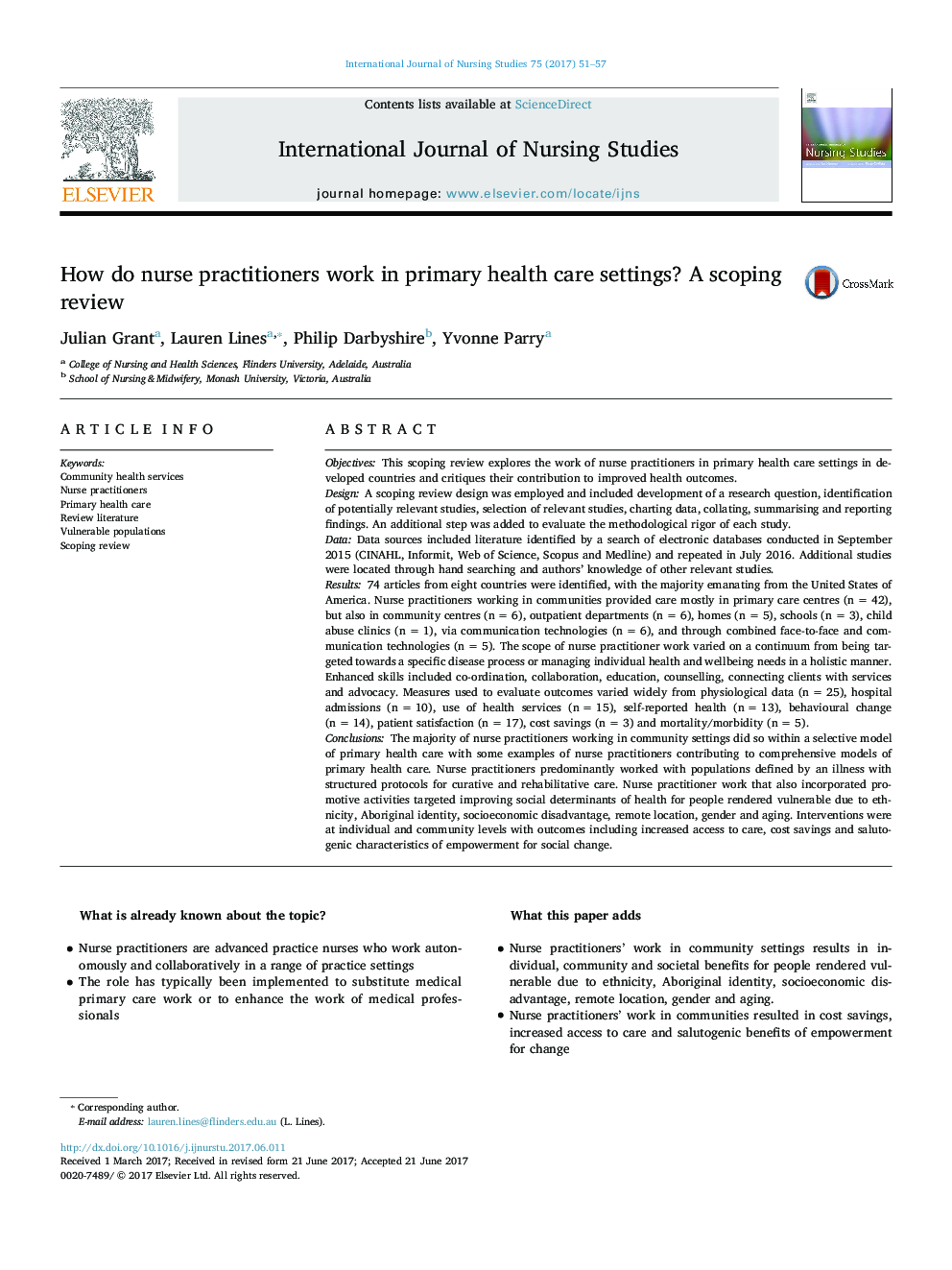| کد مقاله | کد نشریه | سال انتشار | مقاله انگلیسی | نسخه تمام متن |
|---|---|---|---|---|
| 5120936 | 1486494 | 2017 | 7 صفحه PDF | دانلود رایگان |
ObjectivesThis scoping review explores the work of nurse practitioners in primary health care settings in developed countries and critiques their contribution to improved health outcomes.DesignA scoping review design was employed and included development of a research question, identification of potentially relevant studies, selection of relevant studies, charting data, collating, summarising and reporting findings. An additional step was added to evaluate the methodological rigor of each study.DataData sources included literature identified by a search of electronic databases conducted in September 2015 (CINAHL, Informit, Web of Science, Scopus and Medline) and repeated in July 2016. Additional studies were located through hand searching and authors' knowledge of other relevant studies.Results74 articles from eight countries were identified, with the majority emanating from the United States of America. Nurse practitioners working in communities provided care mostly in primary care centres (n = 42), but also in community centres (n = 6), outpatient departments (n = 6), homes (n = 5), schools (n = 3), child abuse clinics (n = 1), via communication technologies (n = 6), and through combined face-to-face and communication technologies (n = 5). The scope of nurse practitioner work varied on a continuum from being targeted towards a specific disease process or managing individual health and wellbeing needs in a holistic manner. Enhanced skills included co-ordination, collaboration, education, counselling, connecting clients with services and advocacy. Measures used to evaluate outcomes varied widely from physiological data (n = 25), hospital admissions (n = 10), use of health services (n = 15), self-reported health (n = 13), behavioural change (n = 14), patient satisfaction (n = 17), cost savings (n = 3) and mortality/morbidity (n = 5).ConclusionsThe majority of nurse practitioners working in community settings did so within a selective model of primary health care with some examples of nurse practitioners contributing to comprehensive models of primary health care. Nurse practitioners predominantly worked with populations defined by an illness with structured protocols for curative and rehabilitative care. Nurse practitioner work that also incorporated promotive activities targeted improving social determinants of health for people rendered vulnerable due to ethnicity, Aboriginal identity, socioeconomic disadvantage, remote location, gender and aging. Interventions were at individual and community levels with outcomes including increased access to care, cost savings and salutogenic characteristics of empowerment for social change.
Journal: International Journal of Nursing Studies - Volume 75, October 2017, Pages 51-57
